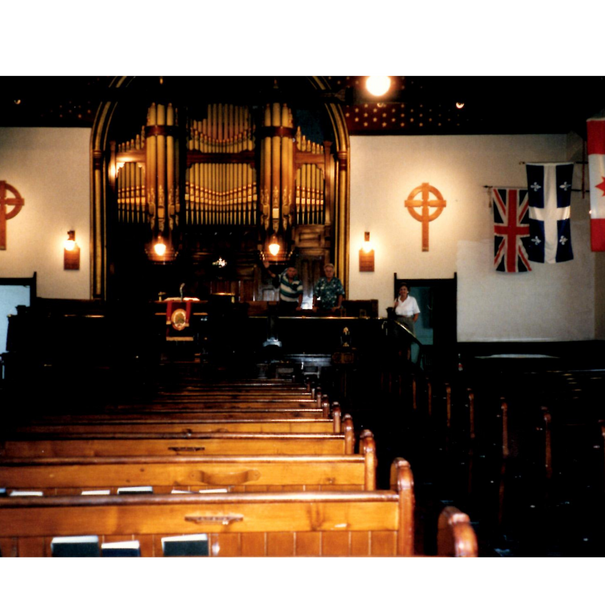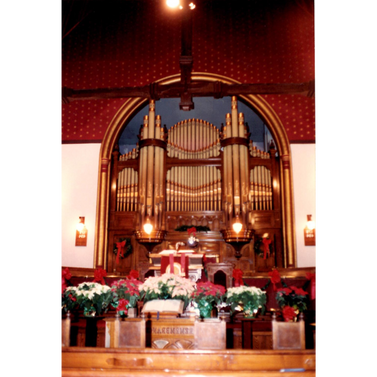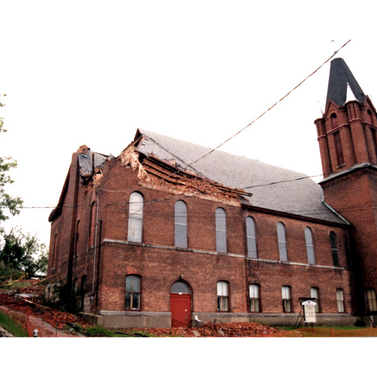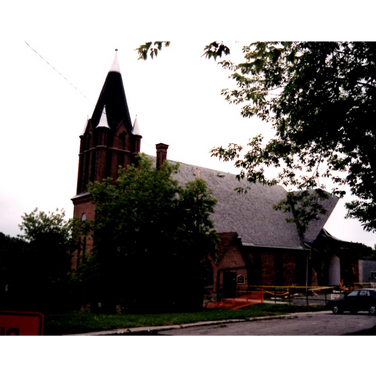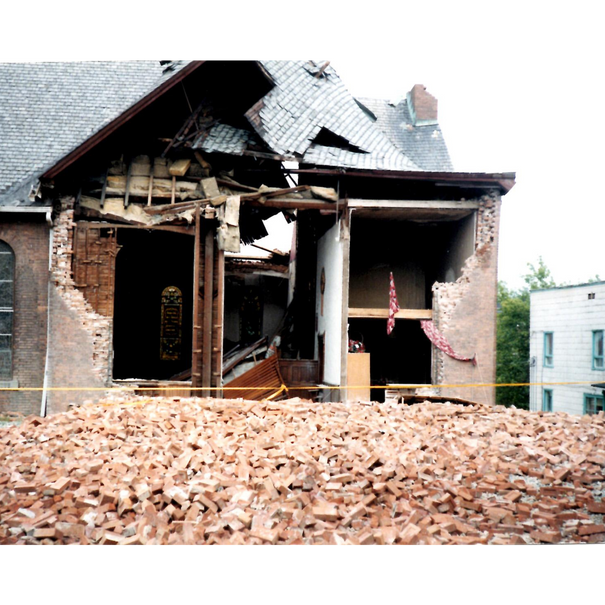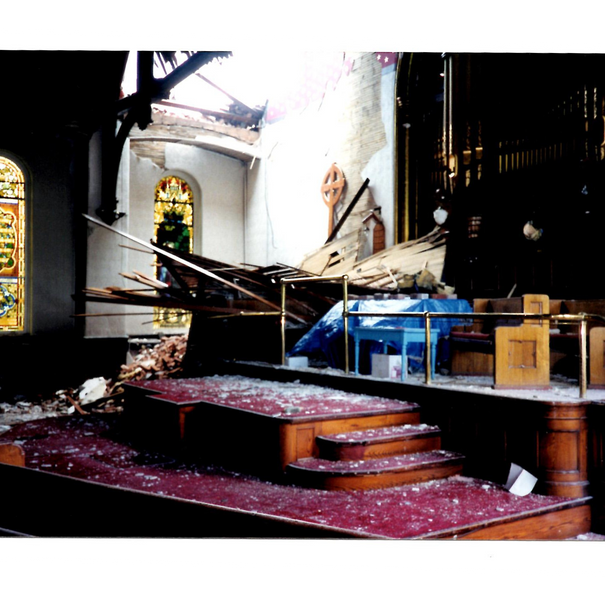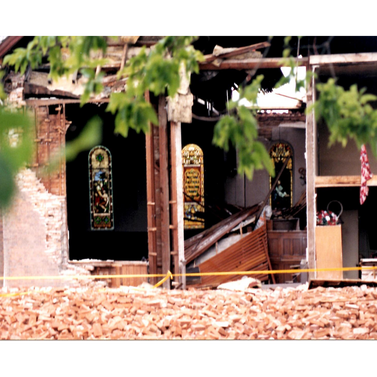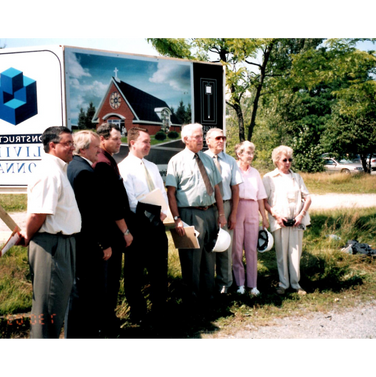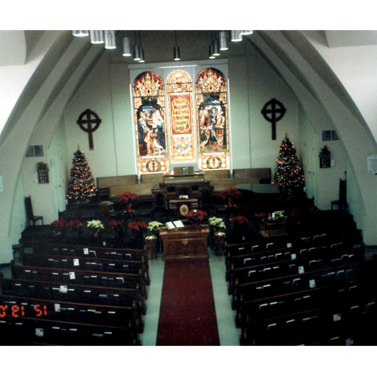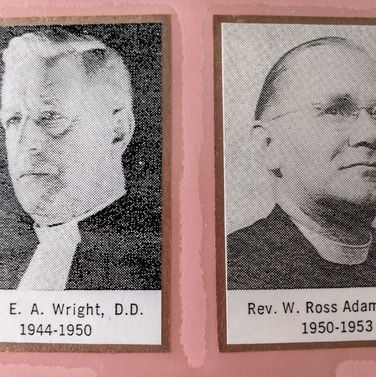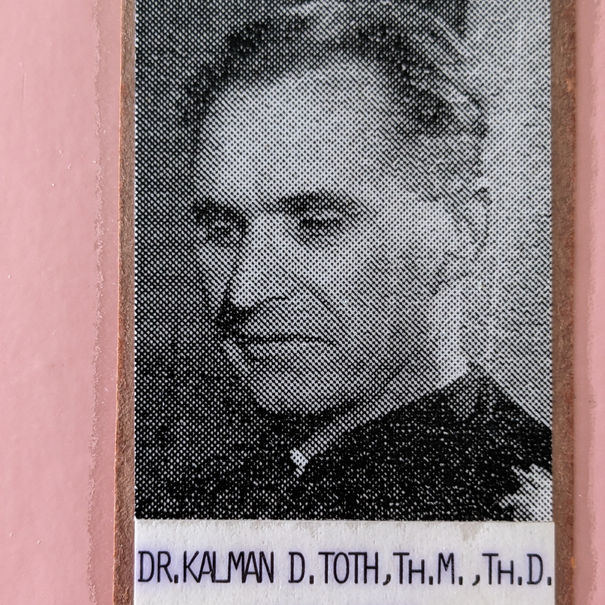OUR HISTORY
A History of St. Andrew’s Presbyterian Church, Sherbrooke
(With information taken from a talk given to the Lennoxville-Ascot Historical Society by George MacDougall*, Sept 11, 1989)
This year (2024) our congregation is celebrating its 140th anniversary. The first real influx of Presbyterians into this area occurred in 1759. These were the soldiers in the British army under the command of Brig. James Wolfe. The Fraser Highlanders accompanying Wolfe had their own Presbyterian chaplain, Robert MacPherson. He remained in what was known as British North America and ministered to the needs of his flock. A few years later, the congregation of St. Andrew’s in Quebec City was established the present church was built on land granted by the government in 1780.
As Scottish immigrants moved into the Eastern Townships during the 19th century, more Presbyterian congregations were formed. By 1840 there were congregations in Inverness and Melbourne, and later in the century, with the Quebec Presbytery there were some thirty congregations including Danville, Richmond, Kingsbury, Windsor Mills, Sherbrooke, Lake Megantic, Marsboro, Gould, Scotstown and Stornoway. Sadly, with a shifting population, most of these have now closed.
In 1863, Mr. Charles Cameron, who had been educated and ordained in Scotland, was sent to Sherbrooke as a “Catechist” possibly by what is now called the Mission Board. Prior to that time, it seems as though the Presbyterians and Congregationalists had been worshipping together. Mr. Cameron’s efforts were fruitful, and the adherents of Sherbrooke and Brompton Falls were soon organized into a charge. The following year 1864, 45 persons petitioned the Quebec Presbytery for permission to be organized into a congregation in Sherbrooke. On October 28, 1864, the Rev. Joseph Evans was inducted as our first minister.
The congregation had no property at that time and arrangements were soon made to purchase a building at 280 Frontenac Street which was then being used as a theatre, but which had been a former Congregational church. The wooden structure was remodeled to accommodate 300 people. Services continued there until 1888 when construction for a new church was begun. Immigration of people from Scotland helped to grow the congregation as well as services conducted by visiting evangelists. At its height in 1925, the congregation had 900 members!
This building on Frontenac Street had a high-vaulted ceiling with exceptional acoustics. The stained-glass windows that are in our current building all came from that building on Frontenac Street and were donated in memory of various members of the congregation, including four in memory of those who made the supreme sacrifice in the Two World Wars. In 1908 the congregation made a major purchase of a Casavant pipe organ at the cost of $3,800. In 1931 the ceiling was sheathed diagonally with BC fir. The centennial project in 1964 saw the renovation of the hall which included a remodeled kitchen, a Ladies’ Parlour, a large open hall for Sunday School, and an office for the minister.
After many years of both growth and setback, the congregation was literally struck a blow when a severe windstorm hit Sherbrooke in 1999. The result was that a major wall had been blown out and the entire structure had shifted on its foundation. The result was a decision to demolish the building, sell the property and to build in Lennoxville (now Sherbrooke). A service of dedication for our new building was held on April 30, 2004.
Our congregation has changed from that of the early Scottish immigrants. We are small in number compared to those congregations of the early 20th century, but God is still working amongst us and blessing us. We know longer speak of “the kirk” or wear kilts. Our members and adherents come from the Presbyterian Church in Canada, the PC in Ghana and the PC in Cameroon! We have an online presence including a radio broadcast. Times have changed but God has remained faithful.
*George MacDougall, who provided much of the research for this history was an elder emeritus and passed away a few years ago at the age of 100. His family had been part of the congregation after their immigration from Scotland in the early 1900s.
End of an era on Frontenac and Rebuilding in Lennxoville
It stood tall and proud on the hillside of Frontenac Street, Sherbrooke, for more than a century. St. Andrew's was a magnificent brick Church, built in the period 1888-91 by devout Presbyterians mostly of Scottish origin. Its formidable tower was a beacon of Christian faith for generations. It was indeed a house of worship much loved by the membership and highly respected in the community, apparently so strong and firmly established that it should endure for many years to come.
On July 4, 1999, the congregation celebrated Communion. It was a beautiful summer day and an inspiring service. No one had any sense of foreboding of the sad day awaiting. That very night the Church was struck by a severe wind and electrical storm. Grief stricken parishioners, stunned and incredulous, gathered in the bleak dawn to view the devastation. There were tears on our faces. Our Church was in ruins. Our sanctuary of worship with all of its sacred memories was damaged beyond repair. But even then we sensed a common determination to rebuild. Our Church would live again!
There followed a long journey of faith for over four years with difficult decisions, delays and complications. We stood together and struggled towards the day when our dream would be realized.
On April 30, 2004, we gathered for a joyful service of dedication of our new building on Queen Street, Lennoxville. The sun shone brightly through the stained glass memorial windows salvaged from the old Church. There, before our eyes were other cherished furnishings which we knew so well. All of which made us feel "at home" in our very new St. Andrew's.
We are so grateful to God for our heritage. We honor the past by continuing to worship and serve with hope and love. We will maintain a strong witness, God being our helper. "Lord, thou hast been our dwelling place in all generations." (Psalm 90:1)
-M. Ferne Murray



